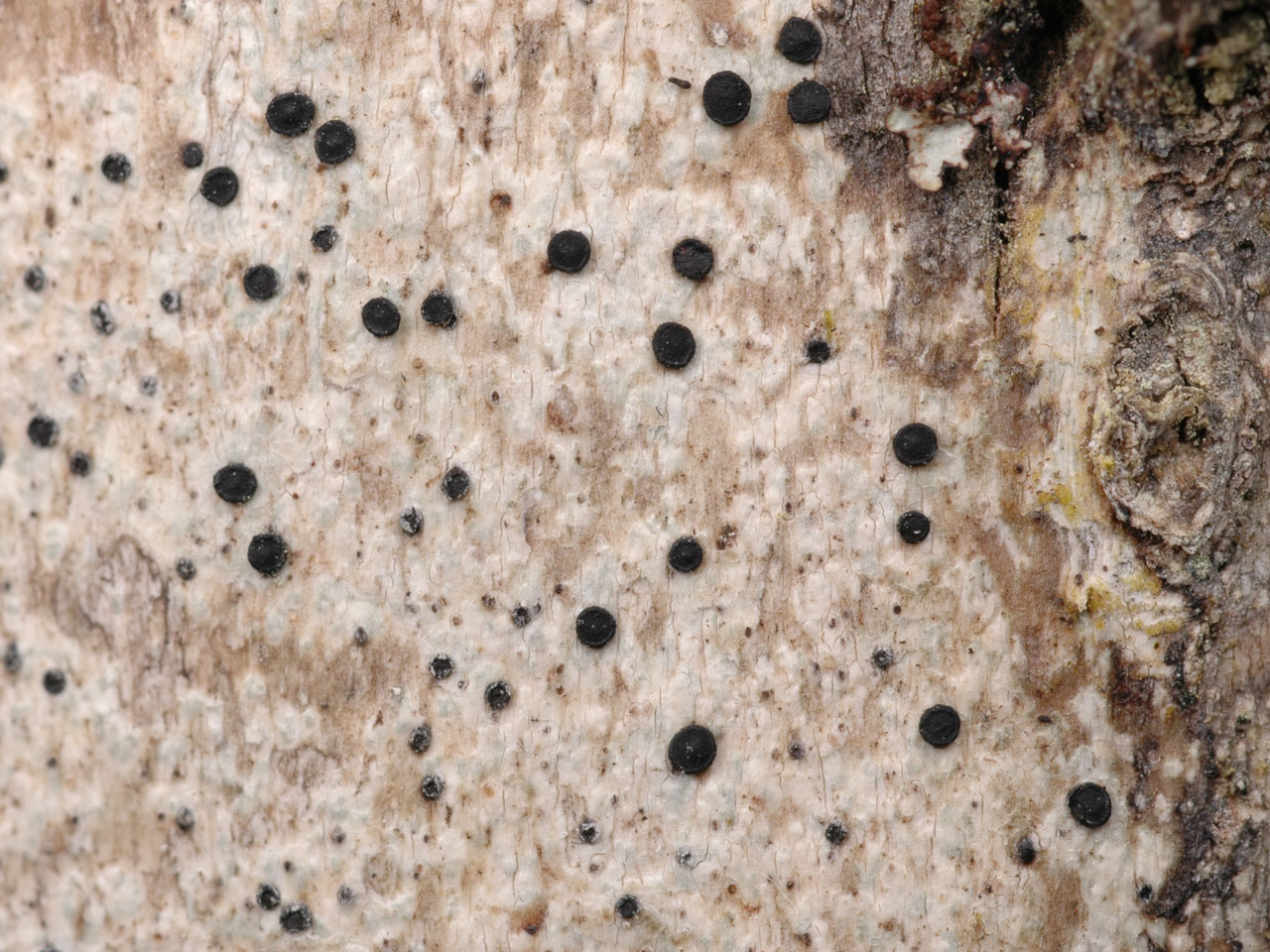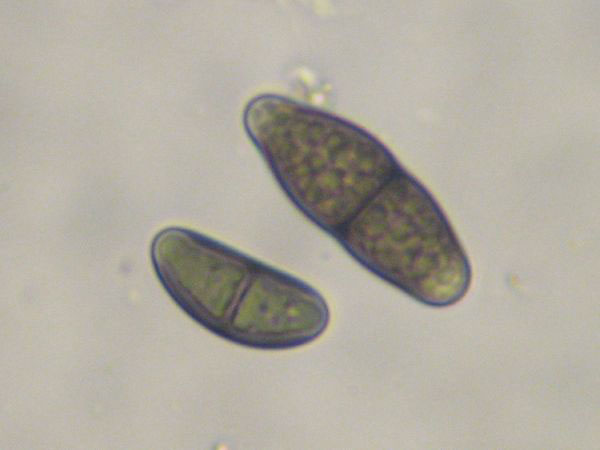A frequent species of smooth mesic bark in N. & W. Britain and W. Ireland, marked by its white thallus with contrasting neat black apothecia, along with brown one septate spores. There are several similar rarer epiphytic Buellia species distinguished by spot tests, the presence or absence of hymenial oil droplets, and form of the spores.
Thallus superficial or sometimes immersed, thin and almost smooth to thick, rimose-cracked and somewhat warted, white to yellow-grey, often delimited by a black prothallus; medulla I–. Apothecia 0.3–1.3 mm diam., superficial; disc flat to slightly convex; true exciple usually persistent, of radial hyphae, the rim more distinctly pigmented than the inner part; epithecium brown, N–; hymenium <100 µm high, with numerous oil droplets; hypothecium brown. Ascospores (13–) 17–26 (–30) × (6.5–) 7–10 (–13) µm, 1(-3)-septate, sometimes slightly curved, wall thinner and paler at the pointed apices; wall internally much thickened at the septum. Conidia 5.5–8.5 × 0.7–1 µm, straight. Thallus C–, K+ yellow, K/UV(dry)+ bright yellow, Pd± yellow, UV– (atranorin, traces of two or more unidentified lichen substances).
See also Buellia arnoldii (larger ascospores and on conifer twigs), B. erubescens (lacks hymenial oil droplets, has rounded, evenly pigmented ascospore apices, and normally a K+ yellow→ red (crystals) thallus), B. hyperbolica (lacks hymenial oil droplets and has a granular & Pd+ red thallus)and B. sanguinolenta (larger ascospores & a K+ yellow→ red (crystals) thallus). Often confused with morphs of Lecidella elaeochroma with a pale thallus, but this has a UV+ orange thallus and reacts K/UV(wet)+ greenish yellow (xanthones). Fertile Buellia griseovirens, which may be becoming more frequent, has superficially similar apothecia to B. disciformis but differs in having a sorediate thallus and different spores and spot tests. Buellia arborea is also sorediate and is rarely fertile.
On mesic smooth bark in more established communities but not confined to old trees or woodlands.

Frequent in N. & W. Britain, Ireland; extending locally elsewhere, where it may be a relic of a wider pre-industrial distribution.
Cannon, P., Prieto, M., Coppins, B., Sanderson, N., Scheidegger, C. & Simkin, J. (2021). Caliciales: Caliciaceae, including the genera Acolium, Amandinea, Buellia, Calicium, Diploicia, Diplotomma, Endohyalina, Monerolechia, Orcularia, Pseudothelomma, Rinodina and Tetramelas. Revisions of British and Irish Lichens 15: 1-35.
Text by Neil A. Sanderson based on Cannon et al (2021).



